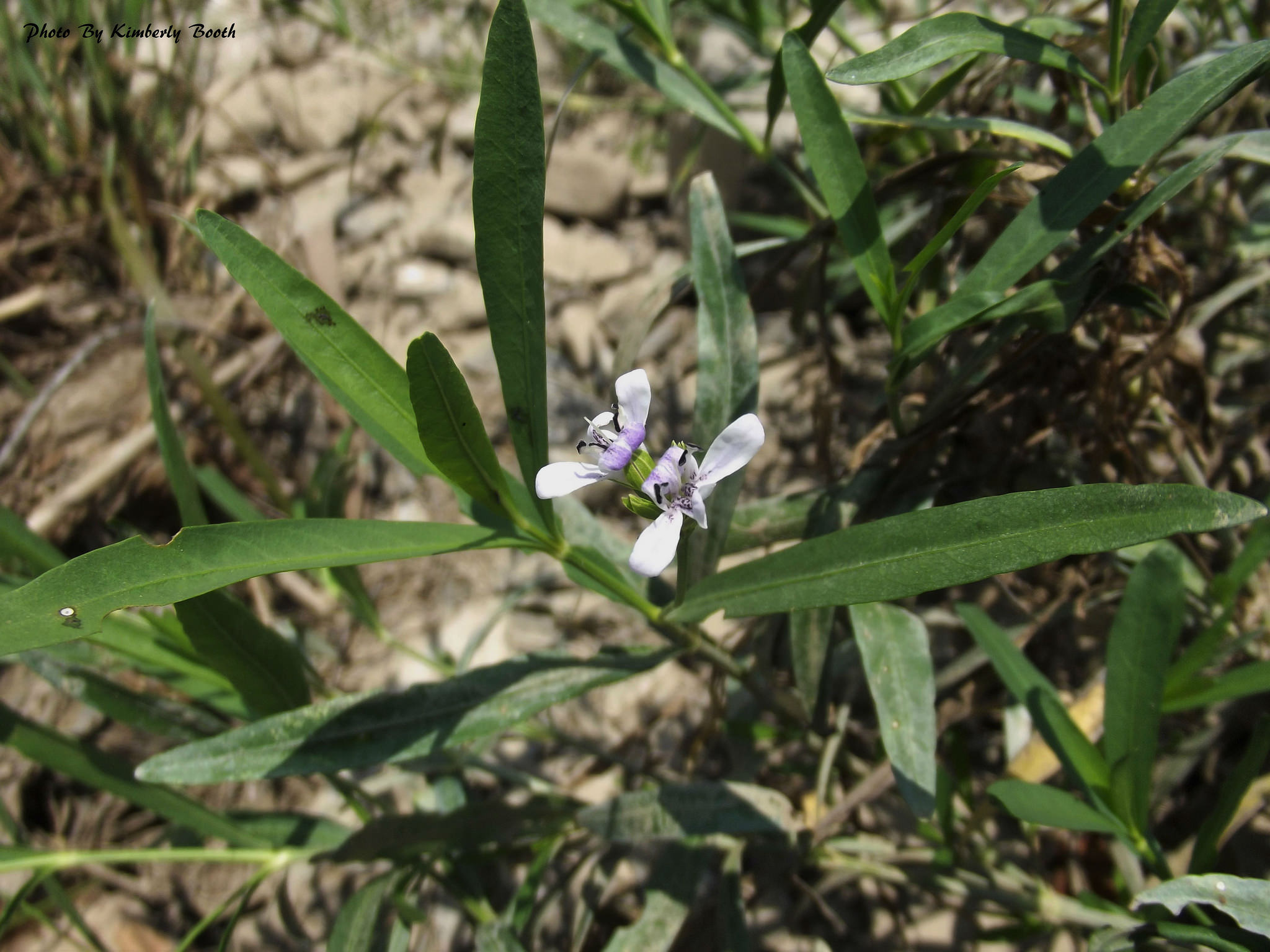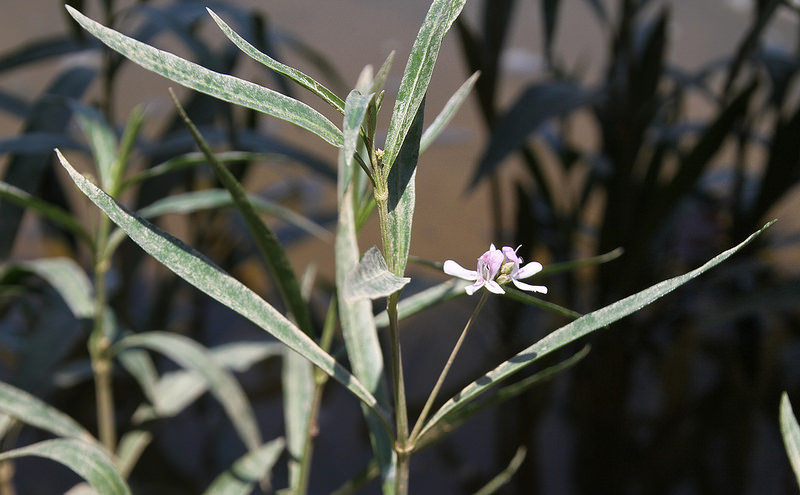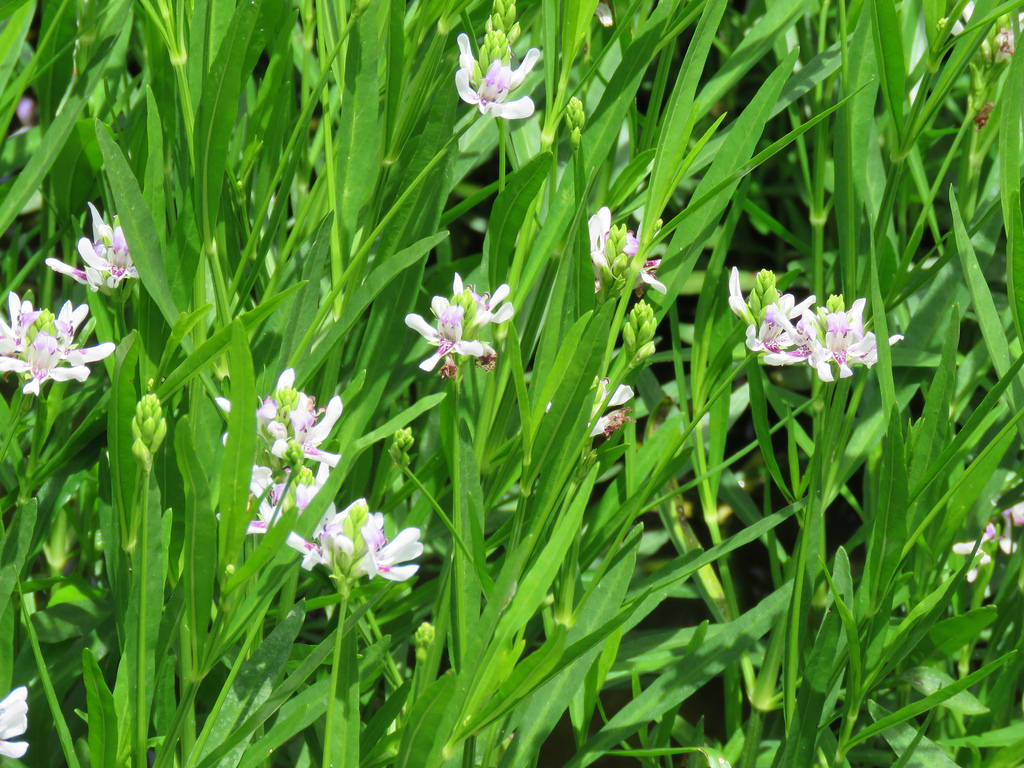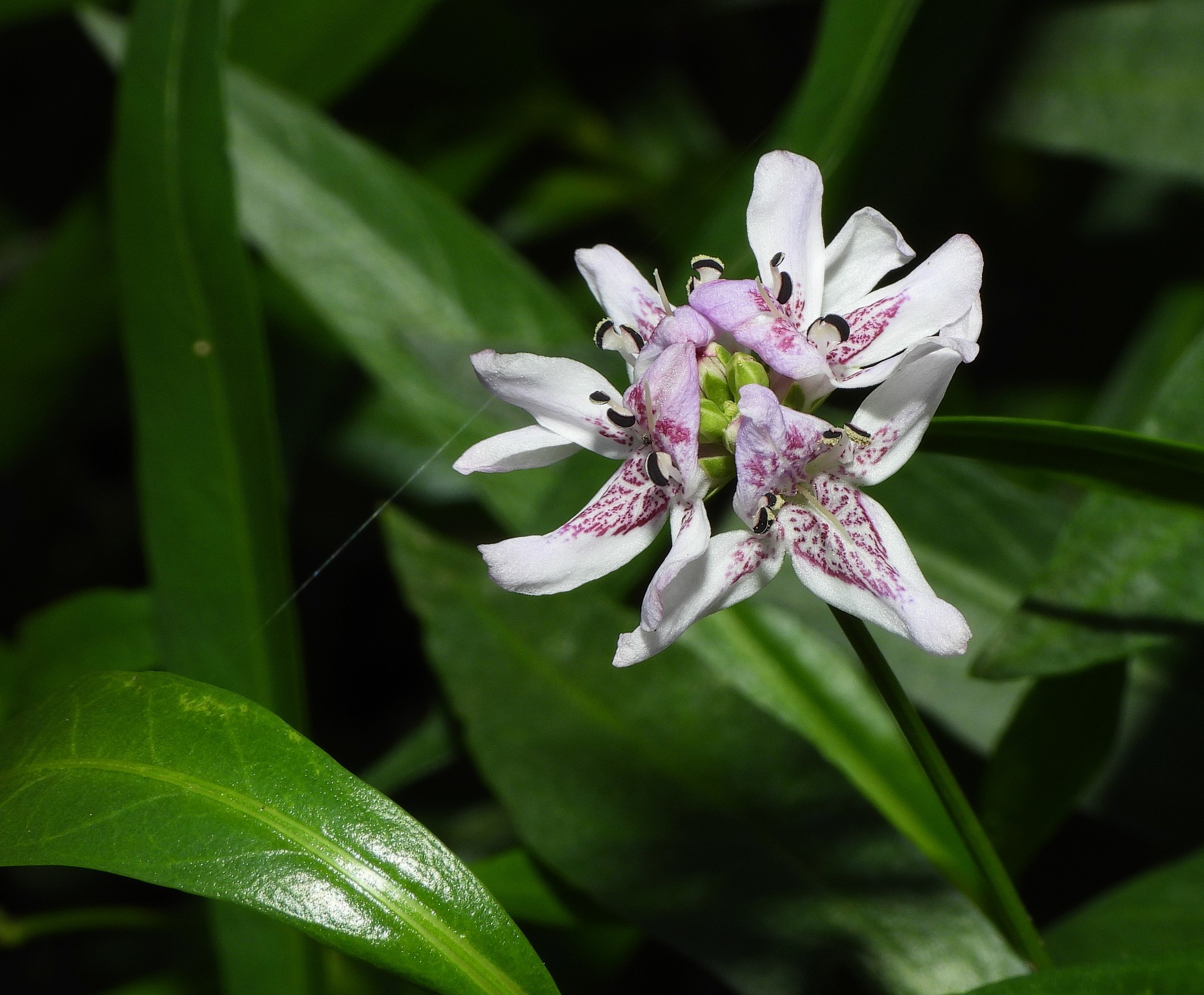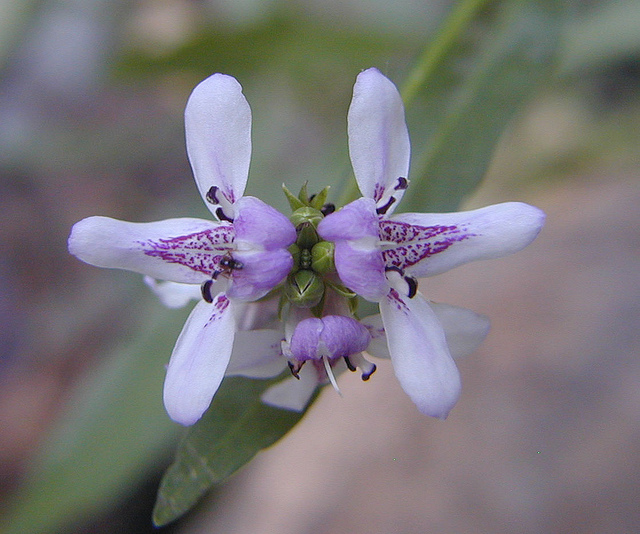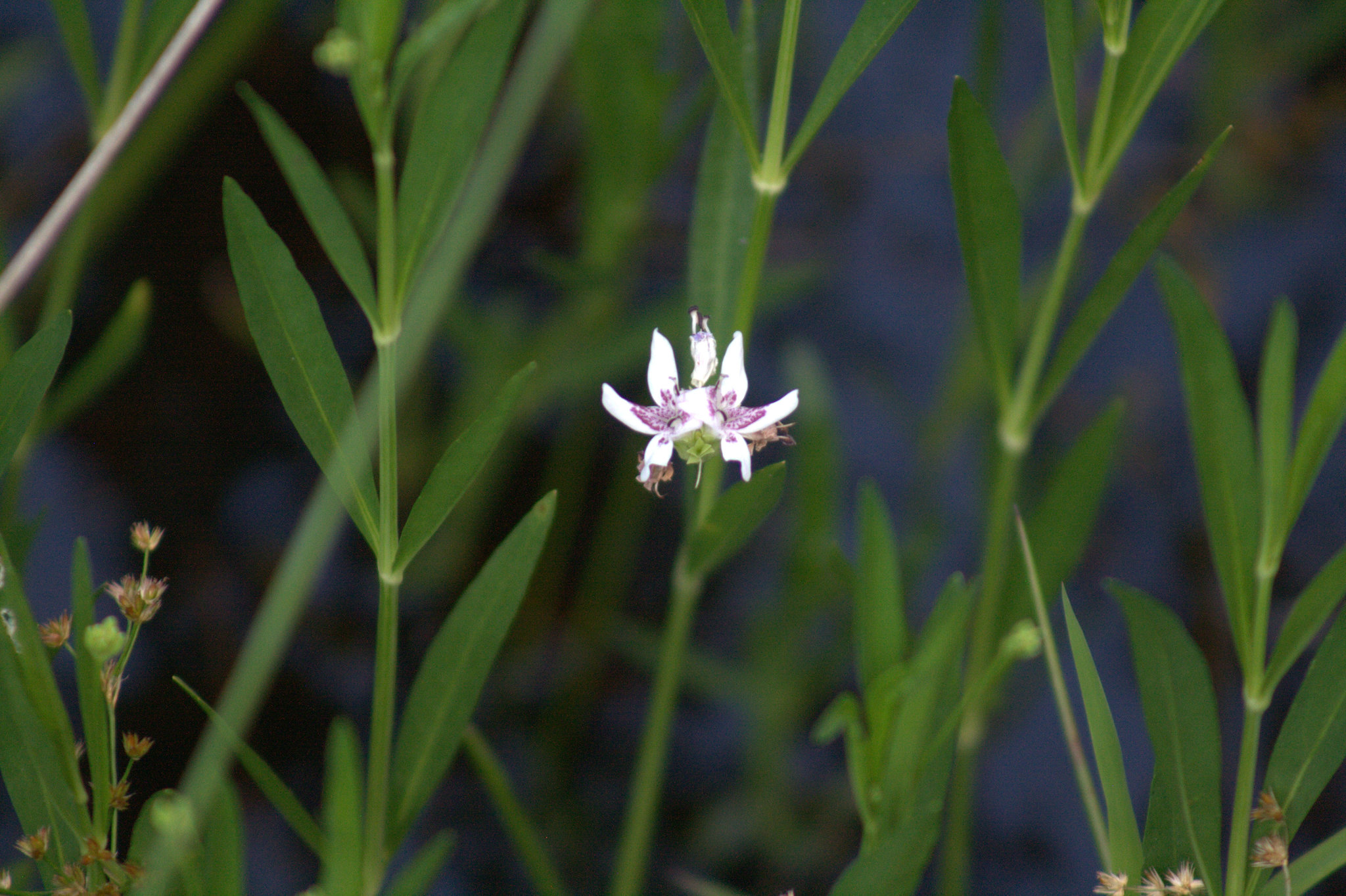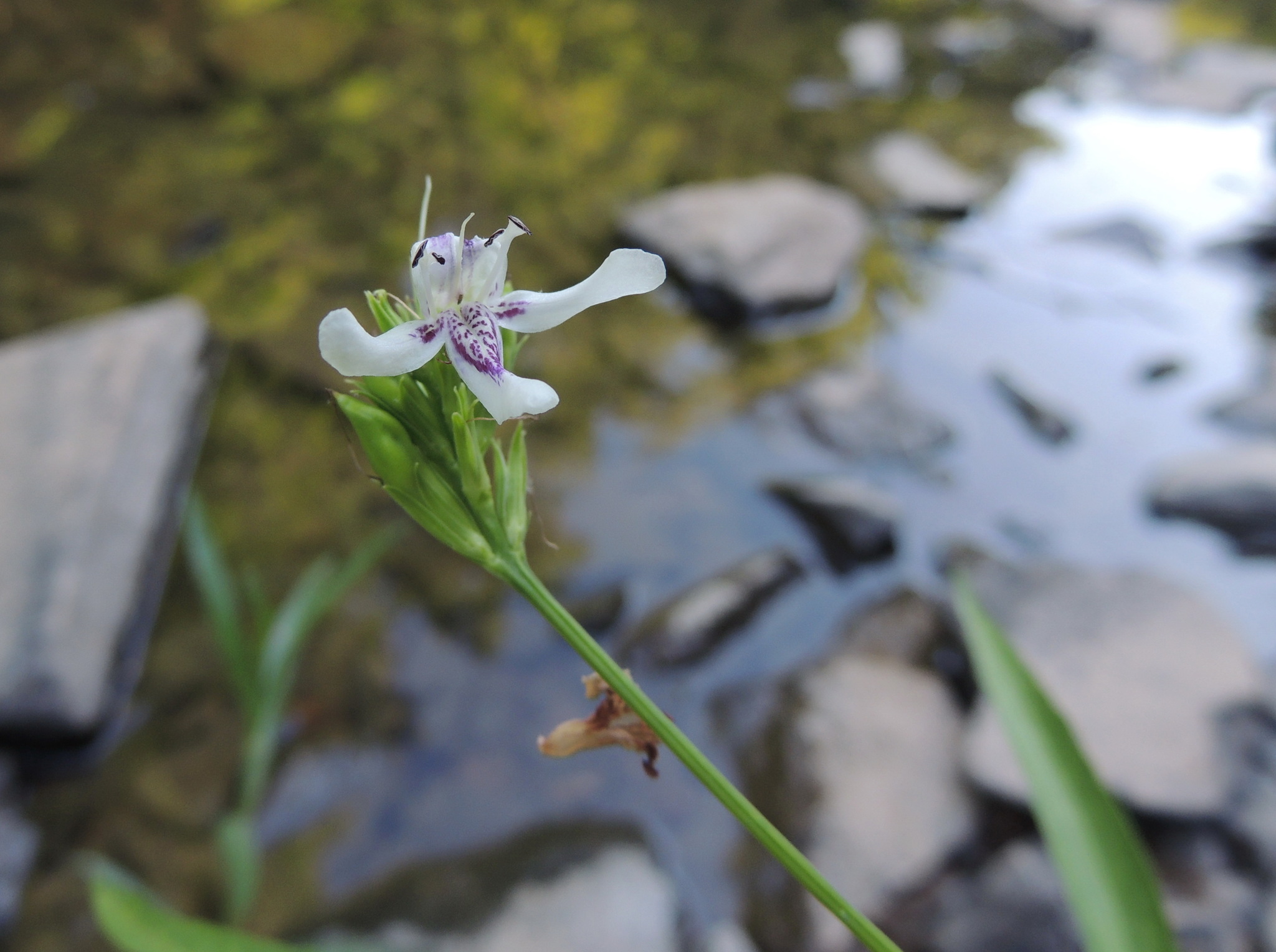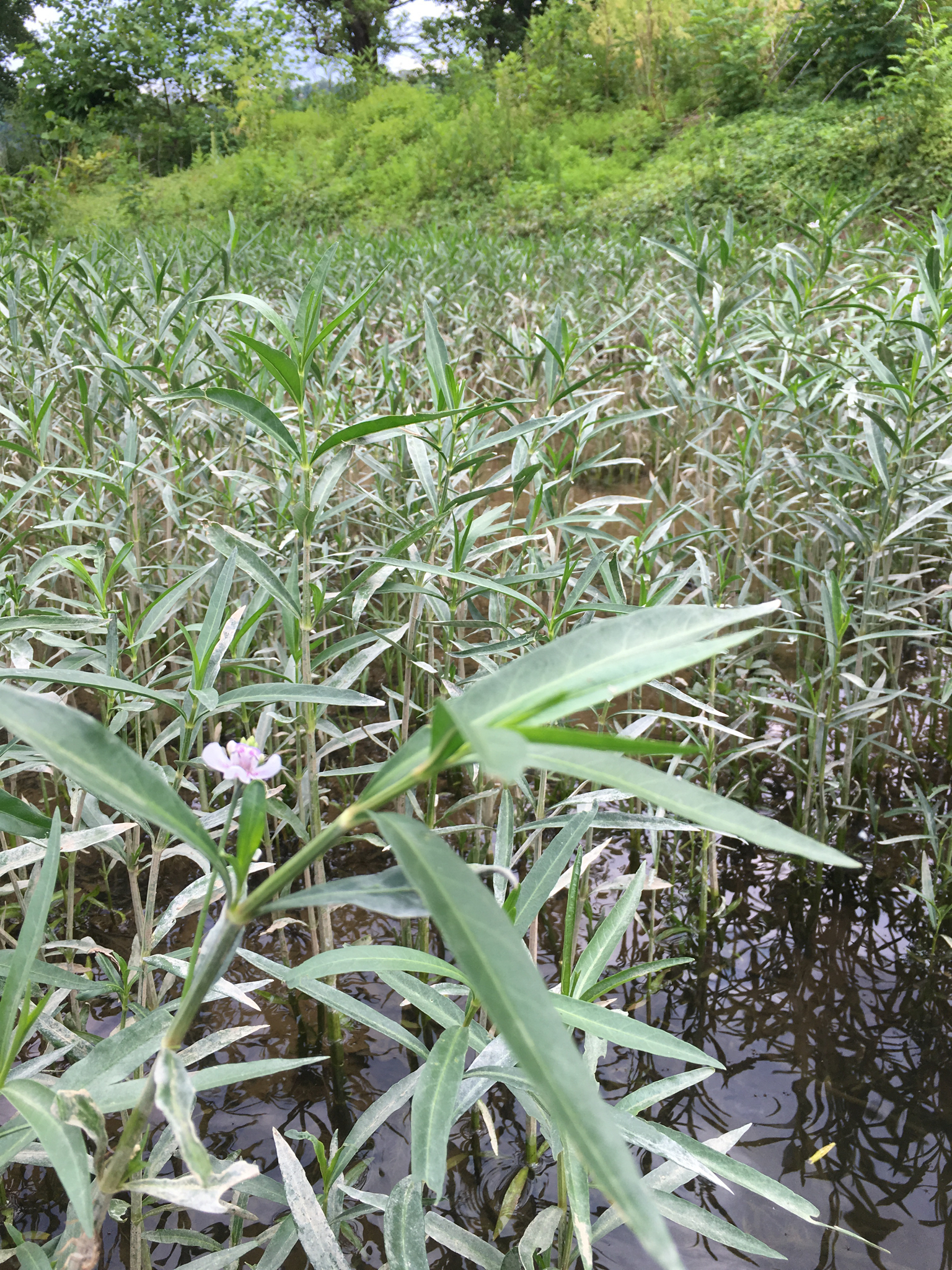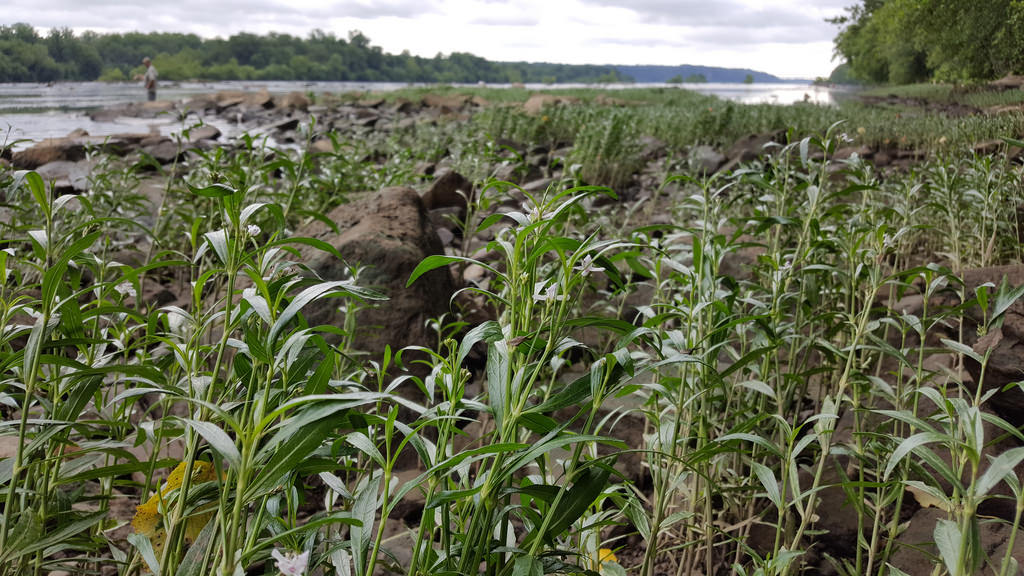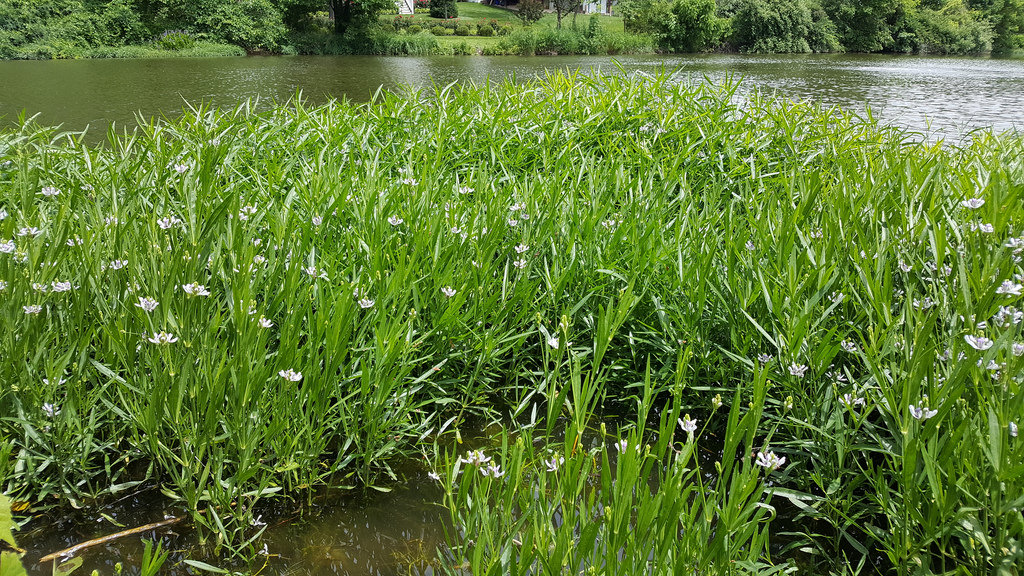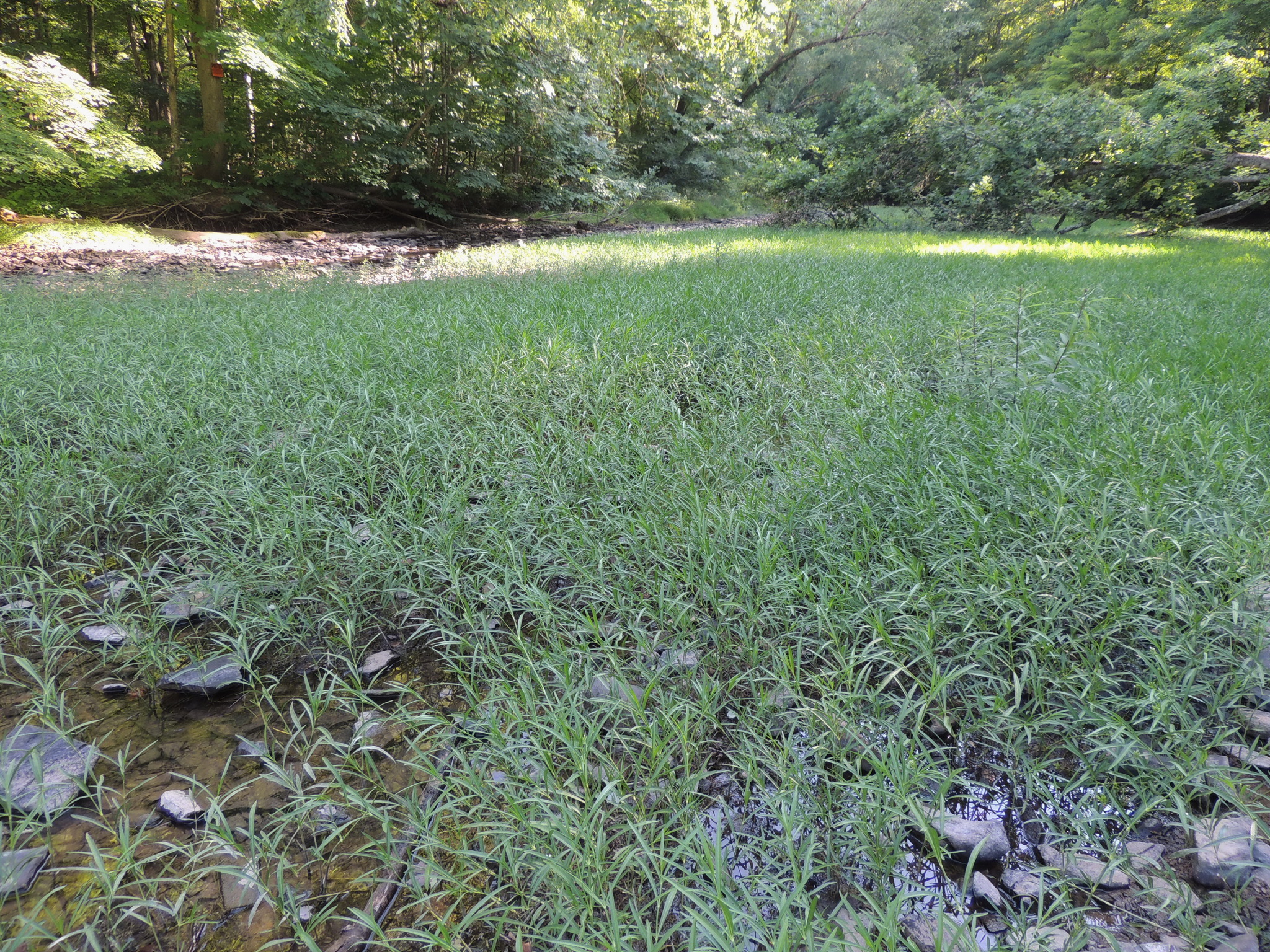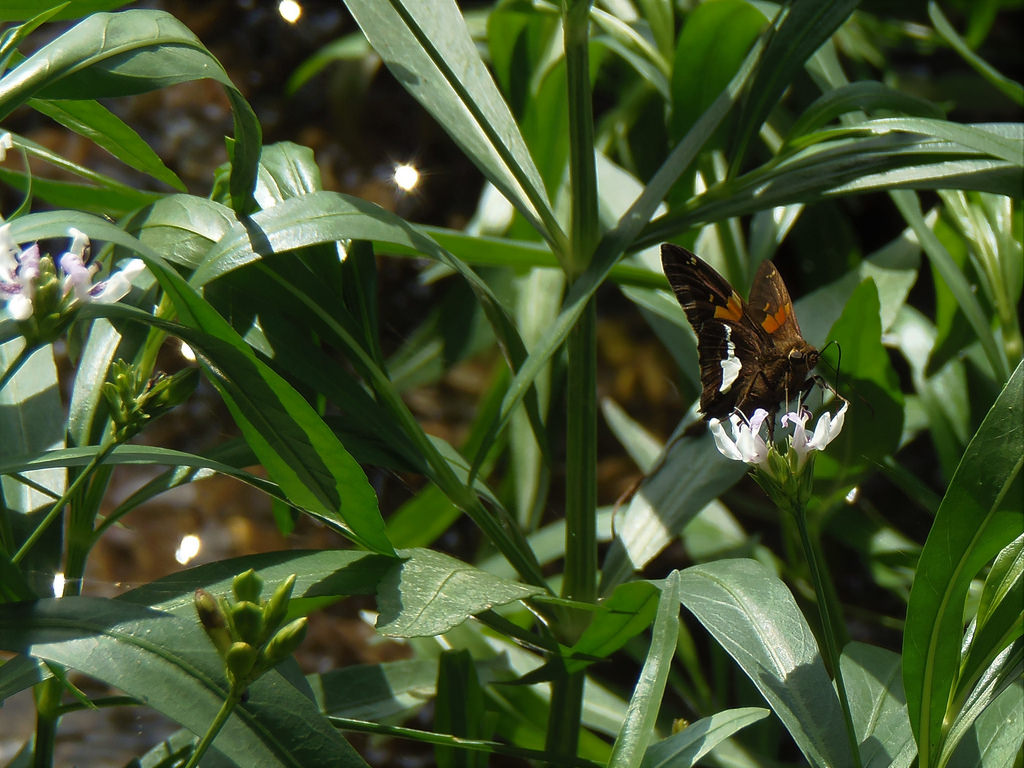Map Snapshot












155 Records
Seasonality Snapshot
Source: Wikipedia
| American water-willow | |
|---|---|

| |
| Scientific classification | |
| Kingdom: | Plantae |
| Clade: | Tracheophytes |
| Clade: | Angiosperms |
| Clade: | Eudicots |
| Clade: | Asterids |
| Order: | Lamiales |
| Family: | Acanthaceae |
| Genus: | Dianthera |
| Species: | D. americana
|
| Binomial name | |
| Dianthera americana L. (1753)
| |
| Synonyms[3] | |
| |
Dianthera americana, the American water-willow, is a herbaceous, aquatic flowering plant in the family Acanthaceae native to North America. It is the hardiest species in the genus Dianthera, the other members of which being largely tropical and subtropical, and it is able to survive as far north as USDA zone 4. It is common throughout its range.
The grows partially submerged in still or flowing water, reaching up to 40 cm (16 in) tall from a creeping rhizome. The leaves are 10 cm (3.9 in), opposite, sessile, linear or lanceolate, and slightly crenulated. The flowers are bicolored, borne in opposite arrangement on spikes 3 cm (1.2 in) long coming off a peduncle 10 cm (3.9 in) long. Color ranges from white to pale lavender with the upper corolla lip pale violet or white, arching over the lower lip mottled in dark purple. The lateral lobes are unadorned or slightly blushed. The anthers are purplish-red rather than the usual yellow. Flowering is from May to October.[4] The fruit of this plant is a small brown capsule.
The creeping rhizome allows Dianthera americana to form large colonies on or near the shorelines of still or slow waters in lakes and rivers, and on rocky riffles and shoals in faster flowing rivers. Its rhizomes and roots provide important spawning sites for many fish species and habitat for invertebrates.[5][6]
Dianthera americana is a listed threatened species on Schedule 1 under the Canadian Species at Risk Act.[2][7] Unseasonal and extreme anthropogenic water level fluctuations and competition from invasive species have contributed to its decline, particularly in the Rivière des Mille Îles, Quebec, and it is today represented by 13 populations in southern Ontario and southwest Quebec.[7]

References
[edit]- ^ Smith, K. (2016). "Justicia americana". IUCN Red List of Threatened Species. 2016: e.T64315830A67729917. doi:10.2305/IUCN.UK.2016-1.RLTS.T64315830A67729917.en. Retrieved 3 December 2023.
- ^ a b NatureServe (1 December 2023). "Justicia americana". NatureServe Network Biodiversity Location Data accessed through NatureServe Explorer. Arlington, Virginia: NatureServe. Retrieved 3 December 2023.
- ^ Dianthera americana L. Plants of the World Online. Retrieved 26 January 2024.
- ^ Justicia americana Archived 2011-06-13 at the Wayback Machine at MissouriPlants.com
- ^ Justicia americana Native Plant database at wildflower.org
- ^ Lopez, Jonathan W.; Vaughn, Caryn C. (2023-05-01). "Herbivore damage and riparian shade constrain biomass distribution in American water willow (Justicia americana)". Aquatic Botany. 186: 103617. doi:10.1016/j.aquabot.2023.103617. ISSN 0304-3770.
- ^ a b "American Water-willow (Justicia americana)". Species at risk public database. Government of Canada. 1 October 2023. Retrieved 3 December 2023.
